With 71 per cent less land, and 29 per cent less greenhouse gas emissions, enough healthy food can be produced within a European subsistence food system. Thus writes Hannah van Zanten, of the Framing Systems Ecology Group and her colleagues in a publication in Nature Food on 17 April. ‘I hope this outcome will start a discourse about what we are aiming for.’
Forty per cent of the global grain harvest and 70 per cent of the soy harvest are consumed by cattle. Most of it is lost as nitrogen and greenhouse gas emissions. Van Zanten obtained her PhD with honours in 2016 on calculations for a food system in which cattle feed would no longer be produced. How much animal-based protein can we continue to consume if cattle are fed only through grazing and residue streams that we already have? That would amount to no more than half of the amount Europeans currently consume: 21 grammes per day per person. This would also slash the livestock population in Europe in half.
Animal, human and planet
Van Zanten: ‘I then focused mainly on the role of animal production systems in the food system. In the following years, we added human nutrition, followed by plant nutrition, with the help of many PhD students. Now, the model is “finished” and has many different purposes.’
The model can perform a calculation of the entire food system. It contains data on some 8000 pieces of farmland, their soil types and climate, and knowledge on what type of crop rotation should be applied on these acres. You can enter prerequisites, such as minimal land use or how much grain or sunflower oil you want to produce for a healthy diet. The model then calculates how much land and cattle you need and what harvests you may expect.
Scenario: Today’s diet, with less land and CO2 emissions
Waste food collector
Van Zanten used the model to paint three different scenarios. The first is for circular agriculture in Europe, with minimal land use and the same protein yield as is currently consumed, 83 grams per person per day, mostly of animal origin (60:40). In this scenario, land use drops from 172 million hectares to 50 million hectares, and CO2 emissions are reduced, for example as a result of the fact that people eat different, but not necessarily healthier, and residue streams are used as cattle feed. The profession of waste food collector must be revived.
Scenario: Healthy diet with less land and even fewer CO2 emissions
Wait, what? Cattle still?
In the second scenario, the model was instructed to design a diet that meets the EAT Lancet healthy diet guidelines and the EFSA guidelines for the amounts of protein, carbohydrates, fibres, fat and red meat, and sufficient amounts of all vitamins and minerals required. Again, with minimal land use and using residue streams as cattle feed. In this scenario, land use was reduced to 50 million hectares, and the CO2 emissions were reduced even more than in the first scenario.
And, there was a surprise. Van Zanten: ‘In our model, we always aim to avoid a feed-food competition, that is, growing feed impairing the production of food for humans.’ Still, the model showed feed harvests such as alfalfa and clover. The reason is as follows: ‘Suppose you have sufficient potatoes or wheat for a healthy diet, but you still need a particular volume of sunflower oil. The model earmarks a particular area of land for that, but you can only grow sunflowers once every six years.’
Crop rotation is needed to prevent diseases, and this fact is included in the model. ‘The remaining five years you no longer need potatoes or wheat for your diet, leaving you free to grow cheap and low-fertiliser crops such as alfalfa with which to feed cattle, which in turn provide high-value nutrients for humans.’ This yielded more animal-based products than is required to provide humans with sufficient vitamin B12 without the help of vitamin pills—approximately half of our current intake of beef, pork and chicken.
No wine
The model had been instructed to generate a scenario for the highest possible nutrients for a healthy diet in combination with the most efficient land use. Hence, sugar and wine production were excluded in this healthy scenario with minimal land use and optimal room for nature. It all depends on what we want. Van Zanten: ‘Knowing in what direction we want to head as a society is essential.’
The European Green Deal and Farm to Fork strategy are significant plans for sustainability and health. Is Van Zanten in close contact with Frans Timmermans? ‘No, not yet’, she laughs. ‘But I am open to a discussion.’ The major changes that are required to make one of the scenarios a reality can only occur through a disaster, some claim. Van Zanten hopes to stay ahead of such a disaster. She hopes to initiate a societal debate and, with it, change. To this end, she invested in a graphic summary of her article (see below), showing the scenarios next to the current system. Moreover, she developed a dashboard in collaboration with WANDER, a WUR hub dedicated to visualising research. ‘We are also trying to develop a game based on the model, which contains all sorts of selection options and environmental budgets to show what happens and what is needed to achieve consensus.’
Scenario: feeding as many mouths as possible
Nitrogen and artificial fertiliser
In the last scenario, the researchers anticipate further climate change. ‘If it becomes increasingly difficult to produce sufficient food outside of Europe, we could choose to feed as many people as we can in Europe.’ If the model is asked to produce as much food as possible based on the EAT-Lancet criteria, it can produce sufficient food for all 515 million Europeans and Brits, as well as an additional 767 million people. However, in this scenario, the nitrogen crisis intensifies. ‘In this scenario, you accept a decline in biodiversity because you add, for example, a lot of artificial fertiliser to maximise production.’
Animal welfare
The model may be completed, but as far as Van Zanten is concerned, more could be added. ‘Animal welfare, for example, has not been included in the design. Our calculations are based on the animals’ current high production levels.’ The production would decrease if animals were kept in a more animal-friendly way. ‘In our scenarios, their welfare may even decline because their current feed is standardised, and in our scenarios, the feed will vary in quality.’ If she manages to raise funds, Van Zanten would like to include this aspect in the model.
Hannah van Zanten wrote Circularity in Europe strengthens the sustainability of the global food system with PhD candidates who contributed to building the model: Wolfram Simon, Ben van Selm and Anita Frehner.
Van Zanten will present her findings during a free symposium, The environmental impact of food systems, on 12 June.
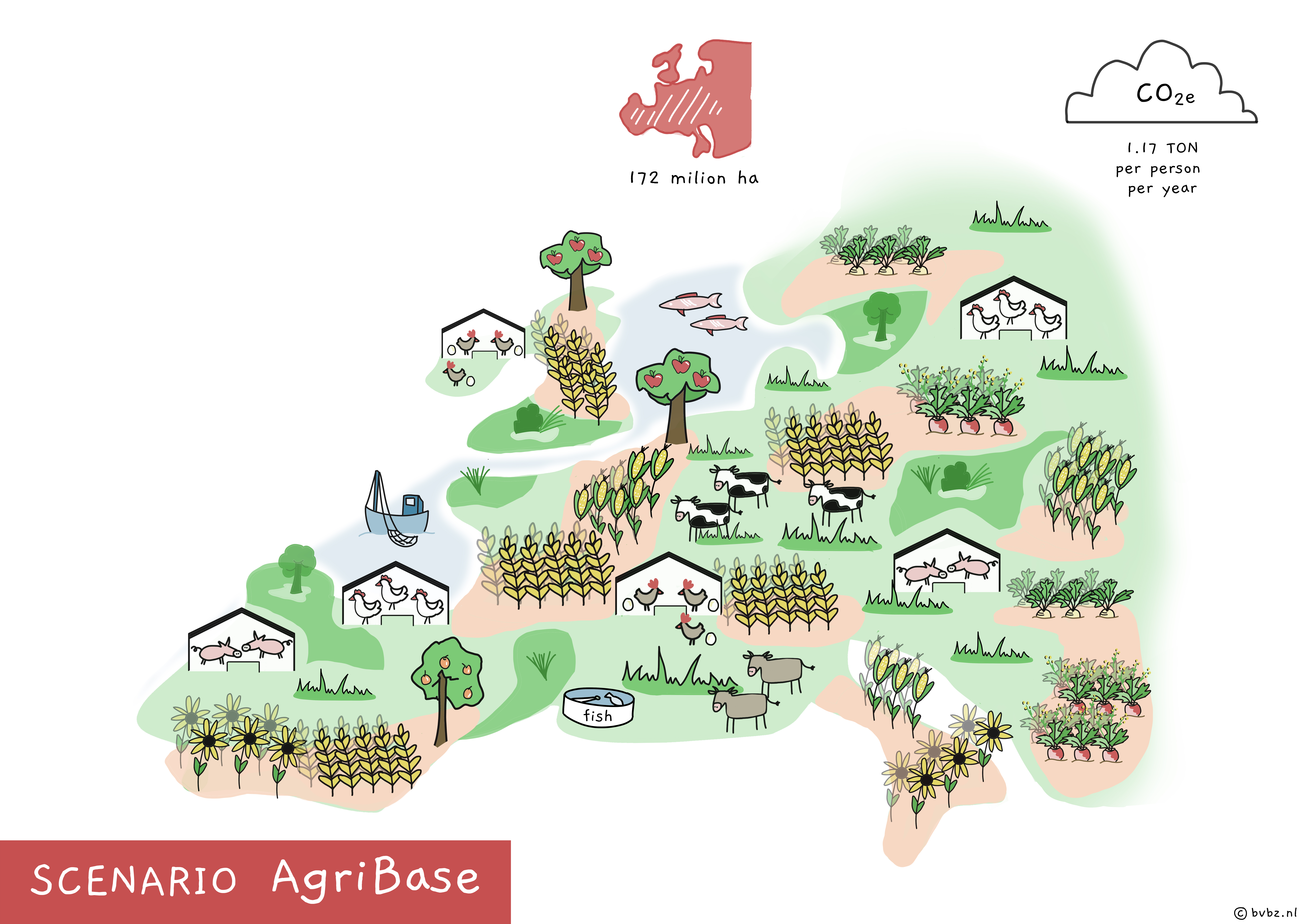
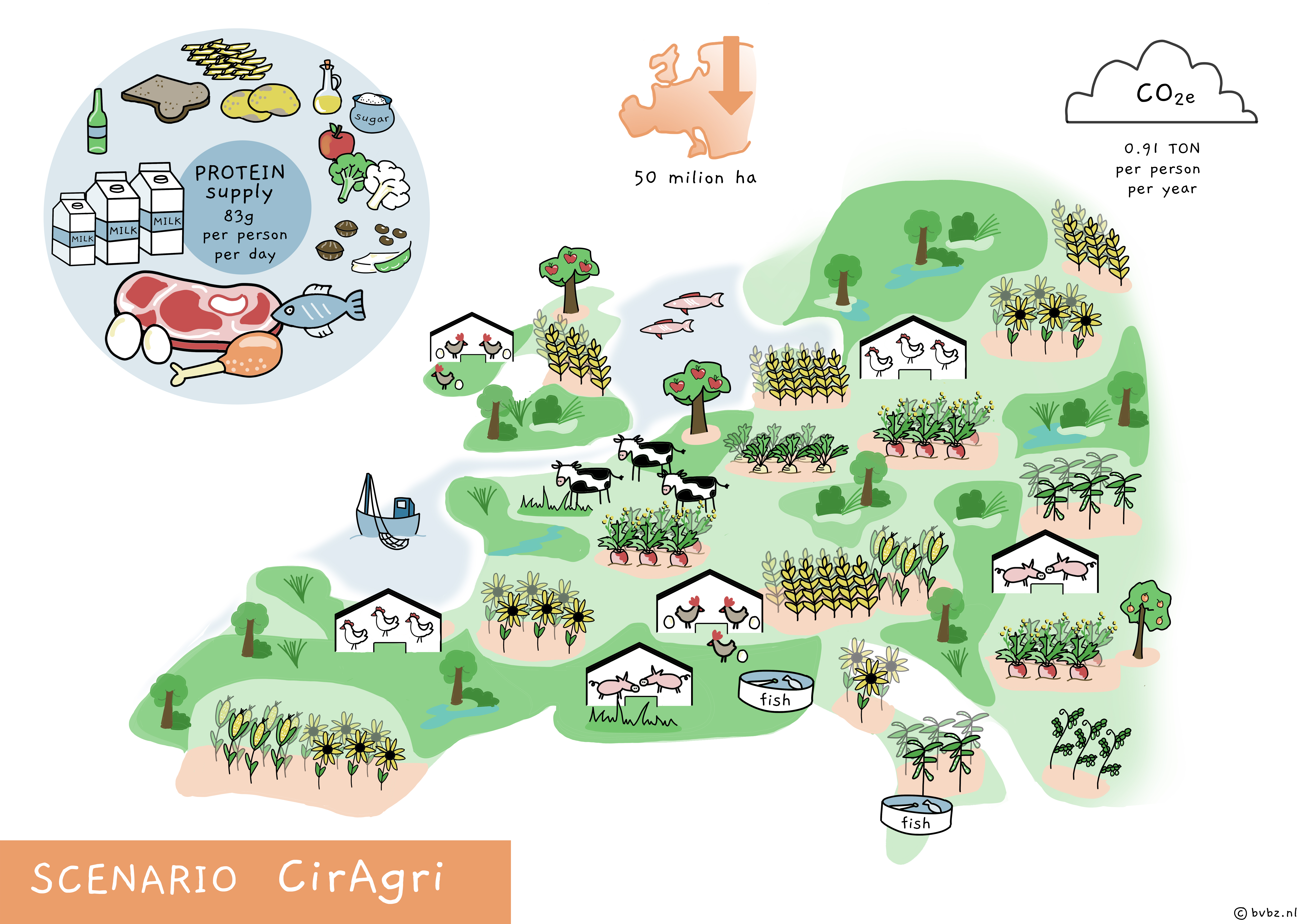
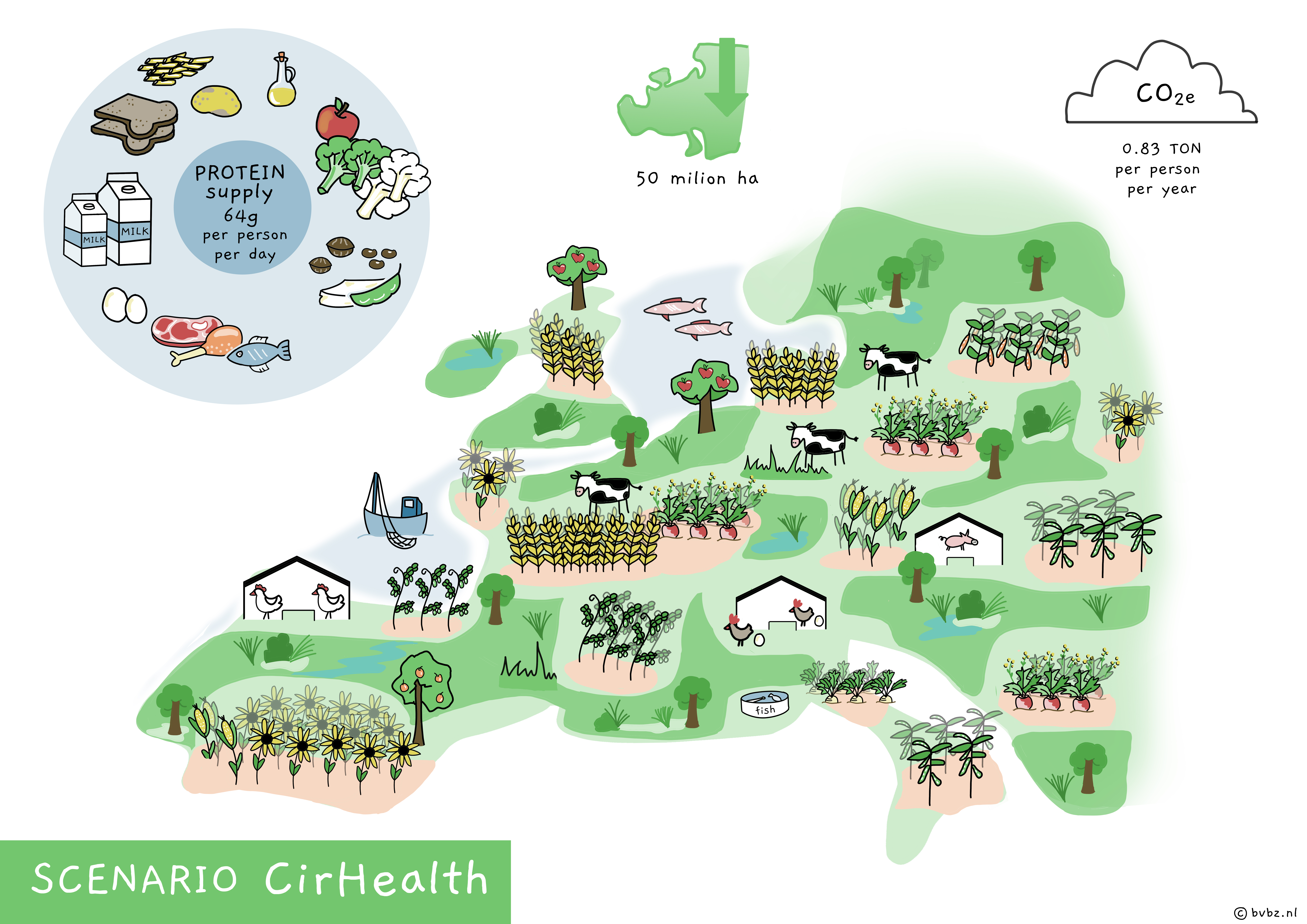
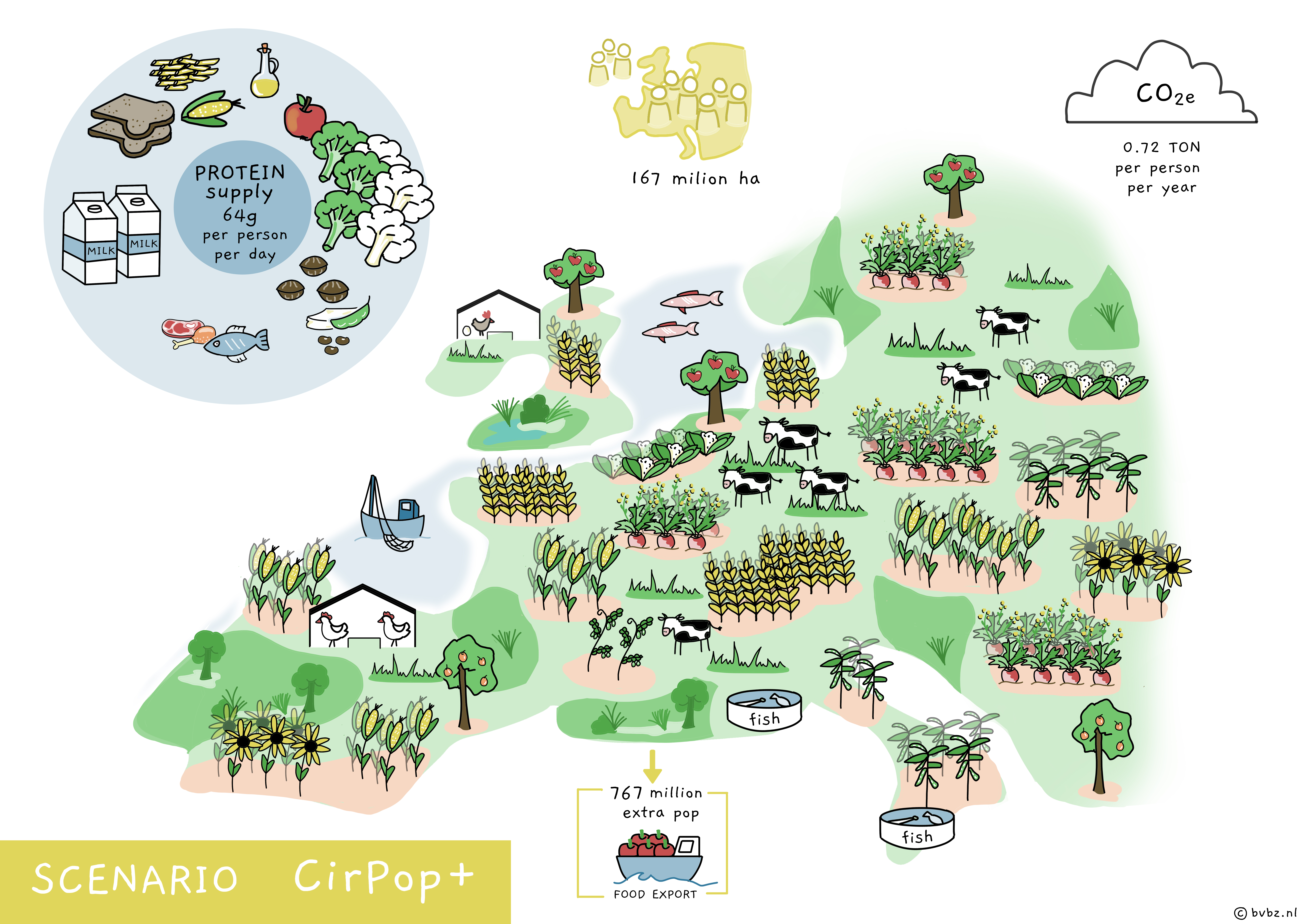

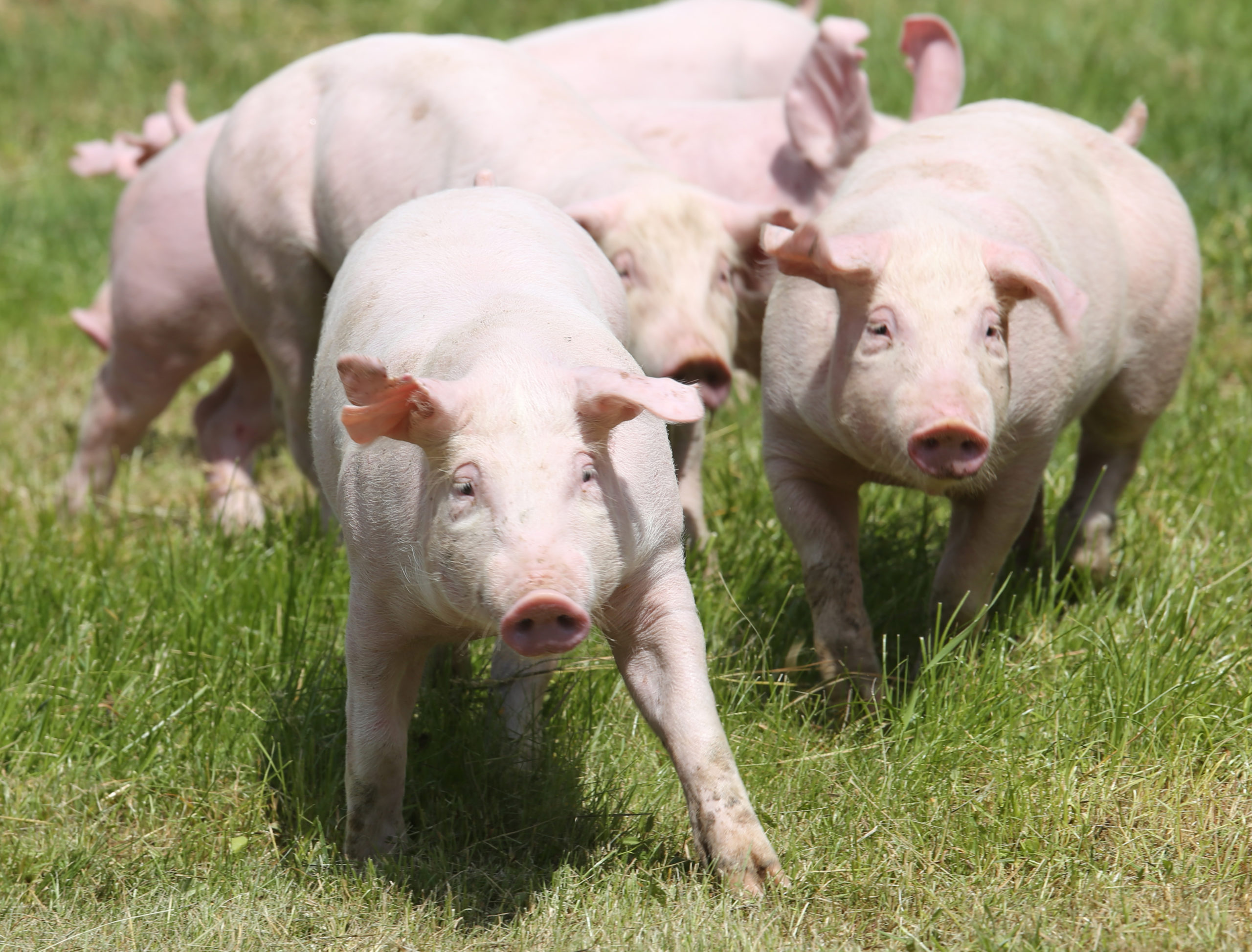 If cattle were to graze and be fed only residue streams that are already available, the livestock population would be reduced by half, and Europeans would eat only half of their current protein intake, 21 grammes per day. Photo Shutterstock
If cattle were to graze and be fed only residue streams that are already available, the livestock population would be reduced by half, and Europeans would eat only half of their current protein intake, 21 grammes per day. Photo Shutterstock